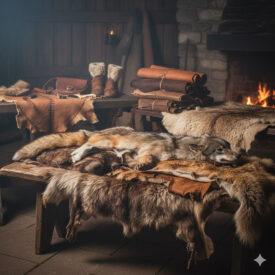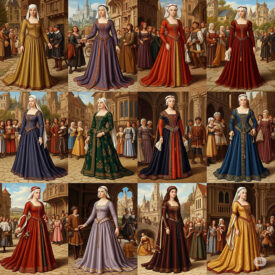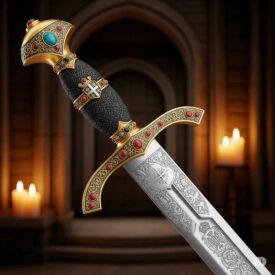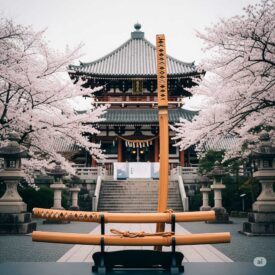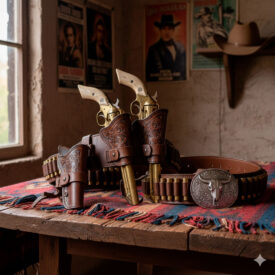What do the seams of the past hide and why are bodices and corsets still relevant today? The history of these garments is not just about fashion: it is a mirror of aesthetic values, social roles, and technical advances that span centuries.
In this article, you will discover the true origin of each garment, how to differentiate them, what materials they are made of, their impact on health, and why they are once again imposing themselves in contemporary fashion and historical reenactment. If you are looking for a definitive guide on bodices and corsets, here is a clear, documented version with an epic tone that connects past and present.
From girdle to corset: evolution of support and adjustment garments
Chronology helps us understand when a technique becomes fashion and when fashion transforms the body. Below is the historical evolution of support garments from antiquity to the present day.
| Era | Event |
|---|---|
| I. Ancient precedents and Middle Ages (Before the 16th century) | |
| c. 1600 BC | First known representation of a garment similar to a bodice: Minoan figurine (Cretan). It was an outer garment that left the breasts exposed; Cretans wore tight leather belts. |
| Roman Antiquity | Use of fabric bands around the chest; in Hispania women wore the stola cinched with a belt under the bust. |
| High Middle Ages (5th–11th centuries) | Loose and geometric clothing predominates; there is no widespread need for structured support garments. |
| High Middle Ages (11th century) | The fashion for the tighter bliaut dress emerges in France; changes towards more fitted garments begin. |
| 12th century | Documented use of bandages or squares of fabric to support the breasts. |
| Early 14th century | Incipient bodice: “pouches” attached to the breast inside the chemise, compression with bands or cords; fitted clothing becomes popular in Europe. |
| Late 15th century (Late Middle Ages) | The dress is divided into two pieces; nobility wear kirtles and bodices so tight that the garment itself provides support. In Castile: cos, corpecico or corpezuelo. Heavy linen, buckram, or cardboard reinforcements are used for a smooth front. |
| Crucial note | Bones or rigid reinforcements are not documented until the mid-16th century; therefore, the rigid and reducing corset is not a medieval garment. |
| II. Renaissance and Baroque (16th–18th centuries) | |
| 16th century (Renaissance) | The boned corset (boned bodice) is born in Italy or Spain; introduced in France by Catherine de’ Medici. The “whalebone bodies” (corps à baleine) are imposed. |
| 16th century — silhouette | Conical shape: flattened the bust and pushed the breasts upwards; it did not seek an extreme waist reduction. |
| Terminology (until c.1680) | In English, the terms bodies or pair of bodies were used to refer to these garments. |
| 17th century (Baroque) | Consolidation of the use of the corset or bodies/stays beyond the nobility. Metal, wood, or bone stays are used; the busk (front wooden frame) is introduced. |
| 17th century — Spain | The bodice continues as a fitted outer garment; the cotilla (interior with stays) is documented from the 17th century onwards, after the corpezuelo. |
| c. 1680 | In English, the term bodies/pair of bodies begins to be replaced by stays. |
| 18th century | The term corset becomes popular from the mid-18th century. The silhouette remains an inverted cone; the garment supports the bust, lightly compresses the diaphragm, and improves posture. |
| c. 1795 | Date on which the modern meaning of “corset” as a rigid inner garment for waist support and constriction is documented. |
| III. 19th century: the era of the corset and the hourglass silhouette | |
| Late 18th – c. 1800 | Empire style period: the corset temporarily falls out of use due to neoclassical fashion; short corsets appear to support the bust, with a raised waist under the chest. |
| 1810–1830 | Return of the corset; it adopts a curved shape and the sablier (hourglass) silhouette. |
| 1830s | The waist returns to its natural position and the corset reinforces the hourglass silhouette. Steel boning begins to be used to replace some traditional whalebones. |
| 1840s | Straps are eliminated; construction with vertical pieces. Appearance of metal eyelets (1828) and the front metal busk (1848) that facilitate closure. |
| 1860s | Crinoline silhouette: the corset shortens (called “bathtub corset”). First elastic inserts begin to be introduced. |
| 1880s–1890s | The waist lengthens; the spoon busk becomes popular, following the rounded shape of the belly and accompanying new skirt fashions. |
| IV. 20th century and contemporary | |
| Belle Époque / Edwardian (c. 1890s–1908) | The S-silhouette is imposed: Inès Gaches-Sarraute creates the “Droit devant” or S-corset, which projects the hips backwards and flattens the belly; abdominal compression is partially abandoned. |
| c. 1908–1914 | The corset lengthens at the bottom (covers thighs) to fit narrow skirts; it loses favor among some of the population. |
| c. 1913 | The corset descends below the bust and is combined with the first bras or brassieres. |
| 1920s | Transition to the girdle: a tubular appearance is sought, with a lightly marked waist and compressed hips. |
| 1930s | Disappearance of the classic corset as a common garment; it is replaced by elastic girdles that persist in various forms until the 1970s. |
| 1950s–1960s | Partial return of emphasis on the waist (influence of Dior’s New Look, 1947). In 1952, the Merry Widow appears, a garment that separates and shapes the breasts. |
| 1968 | Symbolic feminist protests where girdles and corsets were thrown, denounced as “instruments of female torture.” |
| 1980s–1990s | The corset reappears as an outer garment in fashion, linked both to fetishism and to aesthetic and empowerment claims. |
| Present day | The corset remains present in fashion, design, and cosplay (LARP), mostly as an aesthetic or performance garment; in everyday life, figure support depends more on exercise and diet than on rigid garments. |
| Key definitions and distinctions | |
| Bodice | Sleeveless garment that covers the upper torso in a fitted way (shoulders to waist), often open at the front with laces or buttons. Name of Galician origin (“little body”). Worn over clothing and in traditional regional attire. |
| Corset / Stays | Boned garment designed to modify and shape the silhouette; of Renaissance origin (16th century). Characterized by rigid reinforcements (whalebones, rods) and intended to deform or stylize the figure. |
| Cotilla | Women’s inner garment, similar to a corset, with whalebones to support the bust and hips; documented from the 17th century onwards. |
| Bustier (modern) | Combination of bra and corset, generally a shorter and more flexible inner garment; enhances the bust and, in double-layered versions, can flatter the upper abdomen, but does not modify the silhouette like a rigid corset. |
Bodices and corsets: design, materials, and construction
Understanding the difference between a bodice and a corset is essential for choosing according to function and aesthetics. A bodice normally offers light support and versatility; a corset applies pronounced structure and shaping thanks to its reinforcements.
Traditional and modern materials: silk, thick cotton, brocades, and leather are combined with interlinings and boning. Today, stays can be spiral steel (flexible) or plastic for less rigid versions.
On a technical level, the assembly of a corset requires patterns with multiple vertical pieces, reinforced eyelets, and a busk in the center front to maintain its shape. The bodice is usually simpler: fewer pieces, less structure, and the possibility of elastic fabrics for greater comfort.
Quick comparison
| Aspect | Bodice | Corset |
|---|---|---|
| Function | Light support and aesthetics | Shaping and silhouette change |
| Structure | Flexible, few rods | Rigid reinforcements, multiple whalebones |
| Use | Inner or outer, style | Mainly inner or as a structured fashion garment |
| Comfort | High | Variable: from comfortable to restrictive depending on design |
Risks, health, and myths
The history of the corset is full of myths: from the idea that it prevented breathing to accusations of causing irreversible internal damage. The reality is nuanced: a poorly fitted or excessively prolonged and extreme use corset can cause problems (pressure on organs, respiratory discomfort, postural problems), while a well-designed corset used in moderation provides postural support and aesthetics without serious risks.
- Risks: excessive compression, dizziness, digestive discomfort, circulatory alterations.
- Prevention: choose the correct size, use quality materials, and alternate periods of use; avoid extreme tightlacing.
- Practical advice: gradual testing: adjust the garment progressively and listen to your body.
Bodices and corsets in reenactment, fashion, and stores
Today, two worlds coexist: faithful historical reproduction in reenactment and LARP, and the reinterpretation of the corset as a piece of urban or bridal fashion. In the store, you will find pieces designed for both needs: replicas with traditional materials and modern versions designed for comfort and style.
How to choose according to your objective
- Historical reenactment: look for documented materials and patterns, wooden or natural whalebone reinforcements, and reinforced seams.
- Everyday or bridal use: prioritize flexible boning, soft linings, and cuts that respect breathing and posture.
- Outer fashion: choose designs with visible finishes, discreet reinforcements, and decorative fabrics that enhance the overall look.
Care and maintenance
A good bodice or corset ages gracefully if cared for: localized cleaning, avoiding machine washing, hanging or flat storage, and periodic checking of eyelets and boning.
- Remove the boning when possible to clean the garment.
- Use mild soaps and air dry away from direct sunlight.
- Check seams and eyelets before each intensive use.
We clear up unknowns about corsets and bodices
What are the current trends in the use of bodices and corsets?
 Current trends in the use of bodices and corsets for 2025 show a remarkable resurgence of the corset as a visible fashion garment, far from being just a restrictive undergarment. Today, corsets are used as structured and fitted pieces that enhance the female silhouette, and are present in gala dresses and sets, daily wear, and street style, with diverse designs that combine vintage inspiration, modern materials, and varied colors. Celebrities like Hailey Bieber, Sydney Sweeney, and Miley Cyrus have popularized this trend, which symbolizes empowerment and female sensuality. At the same time, modern bodices and bras prioritize comfort, with wire-free styles, soft fabrics, and full cups, adapting to individual needs and avoiding discomfort, reflecting a cultural shift towards more functional and less oppressive garments.
Current trends in the use of bodices and corsets for 2025 show a remarkable resurgence of the corset as a visible fashion garment, far from being just a restrictive undergarment. Today, corsets are used as structured and fitted pieces that enhance the female silhouette, and are present in gala dresses and sets, daily wear, and street style, with diverse designs that combine vintage inspiration, modern materials, and varied colors. Celebrities like Hailey Bieber, Sydney Sweeney, and Miley Cyrus have popularized this trend, which symbolizes empowerment and female sensuality. At the same time, modern bodices and bras prioritize comfort, with wire-free styles, soft fabrics, and full cups, adapting to individual needs and avoiding discomfort, reflecting a cultural shift towards more functional and less oppressive garments.
- Corsets are a visible fashion trend, used in structured dresses and tops with vintage and modern influences.
- Current corsets stand out at events, runways, and everyday wear, symbolizing femininity and empowerment.
- Modern bodices emphasize comfort and healthy support, with wire-free designs and soft fabrics for daily use.
- This duality reflects a balance between the aesthetic recovery of the corset as a prominent garment and the functional evolution of the bodice towards comfort and well-being.
What materials are currently used in the manufacture of corsets?
 Current materials for corset manufacturing include traditional fabrics such as silk, as well as innovative and sustainable materials, such as ethically sourced silks and modern alternatives. For the internal structure, flexible steel boning or plastic boning is used to provide shape and support. Interlinings are also used to reinforce fabrics and specific paddings for areas such as the bust. Craftsmanship combines traditional techniques with modern technologies to ensure functionality and elegance.
Current materials for corset manufacturing include traditional fabrics such as silk, as well as innovative and sustainable materials, such as ethically sourced silks and modern alternatives. For the internal structure, flexible steel boning or plastic boning is used to provide shape and support. Interlinings are also used to reinforce fabrics and specific paddings for areas such as the bust. Craftsmanship combines traditional techniques with modern technologies to ensure functionality and elegance.
How has the shape of the corset evolved from the 19th century to today?
The shape of the corset has evolved significantly from the 19th century to today. In the 19th century, especially in the Victorian era, the corset was characterized by an hourglass silhouette with an extremely narrow waist called a “wasp waist,” an elevated bust, and voluminous skirts; it was very rigid, with whalebones and steel rods, and was a popular, accessible, and highly ornamented garment. In the early 20th century, the corset began to adapt to new, freer fashions, with “S” shaped silhouettes that compressed the body but aimed for greater comfort and movement.
With the advance of the 20th century, designers like Paul Poiret and Coco Chanel promoted the elimination of the traditional corset to free the female body, favoring lighter and more comfortable garments. Since then, the corset ceased to be used as an everyday garment and became more of a fashion or lingerie item.
Today, the corset has returned with force in vintage and bridal fashion, but with a modern approach that combines historical aesthetics with greater comfort and support, offering versions both under and over the bust for different uses and body types. This evolution shows the continuity of its classic form adapted to current tastes, maintaining its essence but with new functionalities.
What impact does the use of corsets have on the physical and mental health of women?
 The use of corsets can have negative impacts on women’s physical health, such as excessive pressure on internal organs, which can lead to their displacement and affect their function; it can also cause pelvic organ prolapse, difficulty breathing, discomfort, fainting, and indigestion. In the long term, prolonged and excessively tight use can lead to muscle deformities, spinal deviations, skin diseases, and circulatory problems that could result in serious conditions such as pulmonary embolism. Regarding mental health, although not explicitly detailed in the results, the corset has historically been associated with body manipulation and social limitations that could affect women’s self-esteem and body image. However, there are cases where controlled use can be beneficial, for example, to support the back during physical exertion.
The use of corsets can have negative impacts on women’s physical health, such as excessive pressure on internal organs, which can lead to their displacement and affect their function; it can also cause pelvic organ prolapse, difficulty breathing, discomfort, fainting, and indigestion. In the long term, prolonged and excessively tight use can lead to muscle deformities, spinal deviations, skin diseases, and circulatory problems that could result in serious conditions such as pulmonary embolism. Regarding mental health, although not explicitly detailed in the results, the corset has historically been associated with body manipulation and social limitations that could affect women’s self-esteem and body image. However, there are cases where controlled use can be beneficial, for example, to support the back during physical exertion.
What differences exist between a bodice and a corset in terms of design and function?
The main difference between a bodice and a corset lies in their design and function:
- The bodice is a garment that can be worn both as underwear or outerwear, designed to cover the torso from the waist up and primarily has an aesthetic function and light bust support. They are usually more flexible, with less rigid structure, and can reach the waist or further down.
- The corset is a rigid inner garment, designed to cinch and mold the body from below the bust to the hips, with a reinforced structure using boning or rods to shape the silhouette, strongly adjusting the waist and flattening or enhancing the bust according to its design. Its main function is to modify the shape of the torso in a more drastic and defined way.
The bodice is more flexible and can also be used as an outer garment to enhance the bust and slightly stylize the figure, while the corset is a fitted and structured inner garment to intensely mold the silhouette.
| Type | Main characteristics | Recommended use |
|---|---|---|
| Mineral oil | High penetration, does not degrade or attract dirt | Regular protection and maintenance |
| Camellia oil | Natural, acid-free, non-volatile | Antioxidant protection, lubrication |
| Lithium grease | Dense, durable, does not evaporate | Prolonged storage, protection |
VIEW MORE MEDIEVAL CORSETS AND BODICES | VIEW MORE MEDIEVAL WOMEN’S CLOTHING


